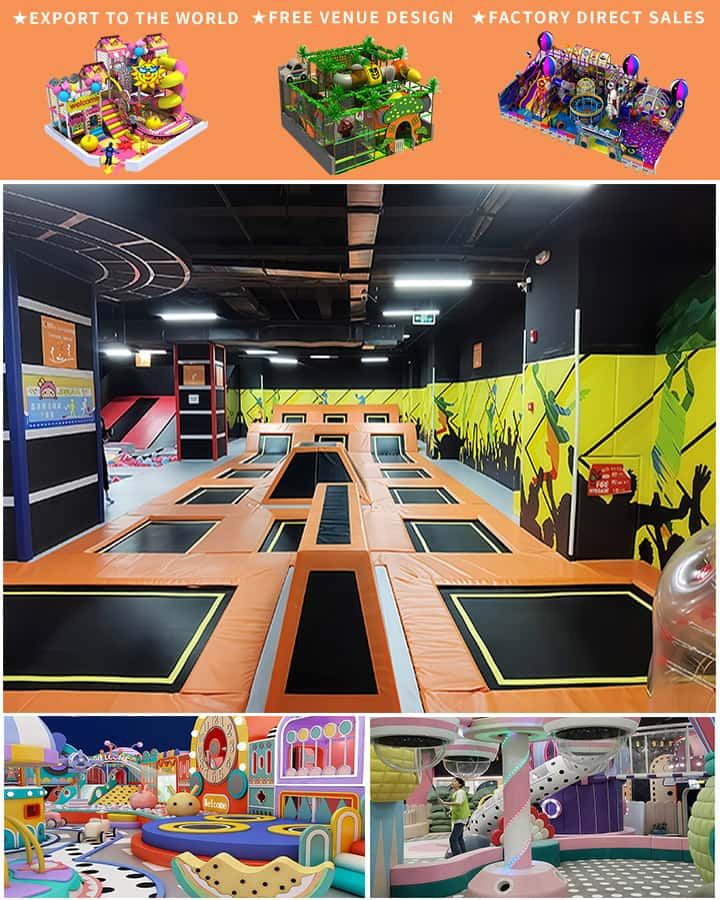In recent years, the popularity of indoor playgrounds has surged, offering children a safe and controlled environment to play, learn, and develop essential motor skills. As more parents and business owners recognize the benefits, they are increasingly curious about the costs associated with setting up and maintaining these facilities. This article aims to provide a comprehensive overview of the different factors that contribute to the cost of an indoor playground.
Initial Setup Costs
The initial setup costs of an indoor playground can vary widely depending on several key factors such as location, size, design complexity, and the quality of materials used. Here are some primary considerations:
Location and Space: Renting or purchasing a suitable space is one of the first expenses. The cost of real estate in metropolitan areas will naturally be higher compared to suburban or rural locations. Additionally, the size of the indoor playground significantly impacts the overall cost. Larger spaces allow for more equipment and activities but come at a higher price tag.
Design and Layout: Custom design and layout planning are crucial for maximizing the utility and safety of an indoor playground. Hiring professional designers or architects specializing in recreational spaces can add to the initial costs but ensure a well-organized and appealing environment.
Equipment and Installation: The core expense comes from the procurement and installation of play equipment such as slides, ball pits, climbing frames, trampolines, and interactive games. High-quality, durable equipment tends to be more expensive but offers better longevity and safety. Professional installation is also recommended to ensure all components are securely and correctly set up.

Safety Features: Safety is paramount in an indoor playground. This includes the cost of soft flooring materials like foam mats or rubber tiles, safety nets, cushioned barriers, and regular inspections. Investing in high-quality safety features might increase initial costs but is essential for preventing injuries and ensuring peace of mind for both parents and operators.
Operational Costs
Once the indoor playground is set up, there are ongoing operational costs to consider. These include:
Staffing: Adequate staffing is essential for supervising children, maintaining equipment, and handling administrative tasks. Salaries for trained personnel, including supervisors, attendants, and cleaners, form a significant portion of monthly expenses.
Maintenance and Repairs: Regular maintenance ensures that all equipment remains in good working condition. This includes cleaning, inspecting for wear and tear, and making necessary repairs. Keeping a budget for unexpected breakdowns and replacement parts is also advisable.
Insurance: Obtaining comprehensive insurance coverage is critical for protecting the business against liabilities and unforeseen incidents. Insurance premiums can vary based on the coverage amount and type of policies selected.
Utilities: Monthly utility bills, including electricity, water, heating, and cooling, are ongoing costs. Efficient energy use and proper insulation can help manage these expenses.
Marketing and Promotion: Attracting customers through effective marketing strategies is vital for the success of an indoor playground. Budget allocation for advertising, promotions, events, and online marketing efforts should be considered.
Financial Considerations and ROI
Investing in an indoor playground requires careful financial planning and a clear understanding of potential returns on investment (ROI). Conducting a thorough market analysis, projected revenue estimation, and break-even analysis can help in making informed decisions. While the initial costs may be substantial, a well-run indoor playground can offer steady income streams through membership programs, party rentals, and daily admissions.
Conclusion
The cost of setting up and running an indoor playground involves various expenses, from initial capital outlay to ongoing operational costs. By carefully considering each component and planning meticulously, entrepreneurs can create a successful and profitable indoor playground. Ensuring a safe, engaging, and well-maintained environment will not only attract more visitors but also build a loyal customer base, ultimately leading to a thriving business.




